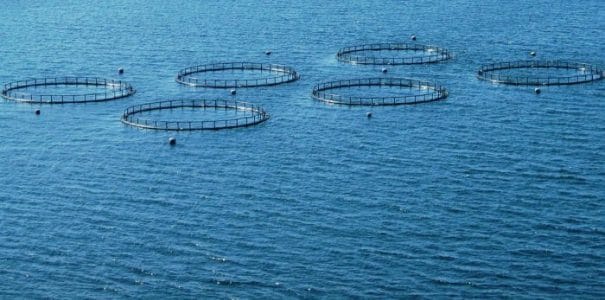A new ecological survey is set to get under way next week to investigate the environmental and commercial feasibility of salmon farming at a site on Stewart Island.
Scientists from the Nelson-based Cawthron Institute will carry out fieldwork including detailed seabed surveys in the north arm of Port Pegasus in an effort to understand whether the area is suitable for aquaculture.
They’ll be using a combination of underwater video footage and sonar imagery to delineate habitats on the seabed and take samples of the benthic sediment. Water current and wave recording meters will also be deployed to provide data so that a model can be developed of water flow in and out of the inlet. Together, this information will be used to predict potential salmon production levels and economic viability.
The initiative is part of a collaborative regional development project promoted by the Southland Regional Development Strategy (SoRDS) programme. SoRDS has identified aquaculture, particularly salmon farming, in the Southland Regional Development Strategy Action Plan, as a leading opportunity to create economic diversity and boost regional economic and social development.
The project is the result of a central-government funded programme put together by SoRDS in collaboration with Ngai Tahu, the Department of Conservation (DoC), the Ministry for the Environment (MfE), the Ministry of Primary Industries (MPI) and the Ministry of Business, Innovation and Employment.
“As a major investor partner, the Government has contributed $950,000 in seed money to kick-start this project. Should feasible sites be found, not only would this sustainable industry fit with our province’s ethos but would create real jobs and growth for Southland communities,” says Invercargill MP Sarah Dowie.
Consultation with community and interest groups, focusing on the environmental, cultural and social implications relating to potential aquaculture activity, began last year.
Southland District Council Mayor Gary Tong, together with representatives from SoRDS and other partner organisations, visited Stewart Island last week to discuss the latest phase of the project with key representatives from the community.
Mark O’Connor, New Industries Team Leader with SoRDS, said the areas identified for survey are all outside of protected marine reserves. The work will not be extending into the south arm of Port Pegasus.
“We are pleased to be moving into the next stage of this project, which will gather detailed scientific data to further facilitate and inform community engagement.
“Aquaculture is a key focus of the action plan, which aims to support development of a more diverse Southland economy, grow the population and strengthen local business.
“Our natural Southland environment and conditions, including the natural attributes of clean, cool, deep and sheltered waters, support the sustainable production of high quality seafood.
“That is already demonstrated by the existing industry in Bluff and on Stewart Island, and iwi have indicated a desire to invest in the sector long term.
He added: “There is significant potential for the development of a larger scale, internationally competitive industry, grounded in the best environmental, cultural and social practice.”
Salmon can only be farmed in a limited range of areas globally as the fish require cold water. Parts of the coastline of Southland is highly suited to Chinook Salmon. This species was originally brought to
New Zealand from California and is heralded as the very best salmon in terms of taste, texture and nutritional quality.
New Zealand’s aquaculture industry has a goal of $1 billion in annual sales per annum by 2025. The Government supports that goal. Norway, a country similar in size to NZ, currently produces 75 times as much salmon.

